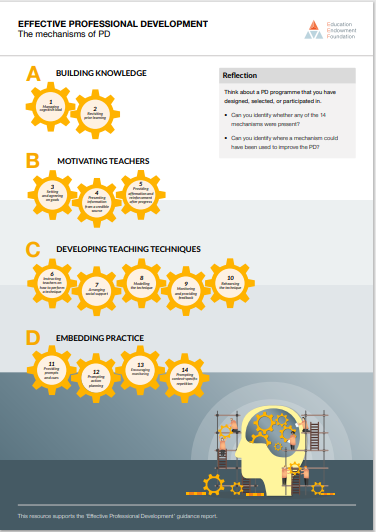Research engaged and evidence informed - lessons from the flipped classroom

Having been involved with continuous professional learning and development for teachers and schools for a number of years, I am committed to the use of research to inform practice but am always also acutely aware of how this can become something that can be viewed as a ‘luxury’ or ‘add on’ in the busy day-to-day world of schools.
We have to make the very best use of the precious time we can allocate to professional development and I have myself engaged with too many sessions which have left me thinking ‘I could have just read that for myself’. Sessions where research is shared but where the opportunity to really engage, explore and apply are limited – usually because of lack of time. That is what led me back to the principles of ‘flipped learning’ in relation to design and delivery of CPLD.
In the ‘flipped learning’ model, content or information is presented in advance of the ‘teaching’ session, in the form of reading or digital material. This then frees the time in the actual session for more active and exploratory engagement, sharing expertise and ideas, and considering practical implications and action plans. The approach is also supported by theory on cognition – particularly that relating to cognitive load. If foundational knowledge has already been acquired, there is capacity for deeper connections and more complex ideas to be explored.
 In practice, this involves the selection of very specific prior ‘reading’, with perhaps a few activating ‘thinking prompts’ added. The expectation of course has to be established that all WILL have engaged with this material, but I have not usually found this to be a problem. The relevant research also has to be sourced, but as we have explored in this blog before, organisations like the Education Endowment Foundation and the Chartered College of Teaching provide access to wide-ranging materials. I also find that short ‘opinion’ pieces like blogs can be excellent stimuli to discussion, whilst also being concise and easy to read – and sometimes deliberatively provocative!
In practice, this involves the selection of very specific prior ‘reading’, with perhaps a few activating ‘thinking prompts’ added. The expectation of course has to be established that all WILL have engaged with this material, but I have not usually found this to be a problem. The relevant research also has to be sourced, but as we have explored in this blog before, organisations like the Education Endowment Foundation and the Chartered College of Teaching provide access to wide-ranging materials. I also find that short ‘opinion’ pieces like blogs can be excellent stimuli to discussion, whilst also being concise and easy to read – and sometimes deliberatively provocative!
In terms of the EEF Guidance of Professional Development, this fits within the ‘Building Knowledge’ layer of the 14 mechanisms. You can find out more about the other layers in the full guidance report which can be downloaded here Effective Professional Development | EEF - and perhaps in future blog posts.
Click here to read our 'Spotlight on Evidence' article which looks at the EEF Effective Professional Development guidance report in more detail.
Written by Tracy Goodway, Saffron Teaching School Hub Local Lead for Chelmsford
Read our other blog posts here.
